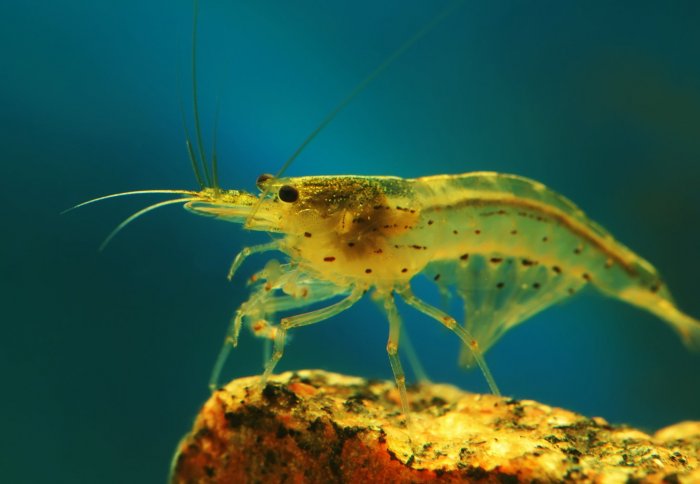Diverse range of species needed to sustain our ponds, lakes and rivers

Ecosystems with a wide range of species cope better with changes in temperature, according to new research.
The various species in an ecosystem perform particular functions that can help to keep that ecosystem thriving, such as eating algae and dead plant material and recycling key nutrients. However, changes in temperature can alter species’ ability to carry out such tasks.
In a new study, scientists have demonstrated experimentally that different species perform their functions best at different temperatures. This means that ecosystems with a diverse range of species have the best chance of thriving as temperatures change, because the range of species allows high levels of multiple functions to be achieved.
The scientists say high levels of biodiversity are needed to ensure that all processes within freshwater environments continue to function well as temperatures change.
Lead author Daniel Perkins from the Department of Life Sciences at Imperial College London said: “Changes in biodiversity and environmental temperature are occurring in ecosystems worldwide. However, we know very little about how these aspects of change combine to impact the functioning of ecosystems and the services they provide. Our study suggests that responses might be far more sensitive to changes in biodiversity and temperature than previously thought.”
The research team consisted of members from several institutions, including Queen Mary University of London where the experiments took place. They hope their study, published in Global Change Biology, will help environmental managers to maintain healthier ecosystems in the face of environmental change.
 The scientists simulated changes in biodiversity and temperature in nearly 100 laboratory aquaria at three temperatures (5°C, 10°C and 15°C) and each aquarium had differing richness of typical freshwater species, including snails, insect larvae and small crustaceans, as well as algae and leaves for the animals to eat.
The scientists simulated changes in biodiversity and temperature in nearly 100 laboratory aquaria at three temperatures (5°C, 10°C and 15°C) and each aquarium had differing richness of typical freshwater species, including snails, insect larvae and small crustaceans, as well as algae and leaves for the animals to eat.
Over four weeks the scientists examined how changes in temperature and biodiversity affected key ecosystem processes, such as how quickly algae was consumed and leaves decomposed, as well as the amount of organic matter produced through eating and excretion. They also measured how quickly nitrogen waste from plants and animals was converted back into ammonium, a key stage of the nitrogen cycle and an important process in all ecosystems.
Their results revealed that the diversity of species had little impact on these individual processes alone, but diversity effects became far more important when all these processes were considered together.
“Some of the different processes we measured are part of a chain that drives decomposition in fresh waters. If one species is lost from the ecosystem then this has knock-on effects. For example, if you removed the caddisfly (Sericostoma personatum), less leaf litter would be eaten, which would then affect the amount of waste produced and the functioning of the nitrogen cycle,” said Dr Guy Woodward, the group leader, also from Imperial’s Grand Challenges in Ecosystems and the Environment Institute, within the Department of Life Sciences.
Scientists also found the temperature had strong effects, as different groupings of species promoted ecosystem processes at different temperatures. For example, the largest species in the study was the caddisfly which performed best at 5°C and 15°C, whereas the freshwater shrimp (Gammarus pulex), which was the smallest species in the study, performed best at 10°C.
Ultimately the results show that species complement each other across processes and temperatures to make sure that all ecosystem functions are maintained. Daniel Perkins explains: “No single species or group of species were able to maintain all functions across temperatures in our study. This implies that high levels of biodiversity are likely required to sustain multiple ecosystem functions in a changing world.”
Dr Woodward points out that species richness could not drive all processes to their maximum potential at all three temperatures. “Interestingly, we saw that the effects of biodiversity varied with temperature. At the moment we don’t know exactly why this happened, but it confirms that species respond differently to temperature change and this can have significant impact on the overall functioning of the ecosystem. So predicting how an ecosystem will respond to a warming climate becomes a lot more complicated and dependent on what combinations of species are present, and I believe this should be a key focus of future research.”
This research was funded by the Natural Environment Research Council (Grant reference: NE/D013305/1).
Reference: D.M. Perkins et al. ‘Higher biodiversity is required to sustain multiple ecosystem processes across temperature regimes’ Global Change Biology, 18 August 2014. DOI: 10.1111/gcb.12688
Article supporters
Article text (excluding photos or graphics) © Imperial College London.
Photos and graphics subject to third party copyright used with permission or © Imperial College London.
Reporter
Press Office
Communications and Public Affairs
- Email: press.office@imperial.ac.uk
